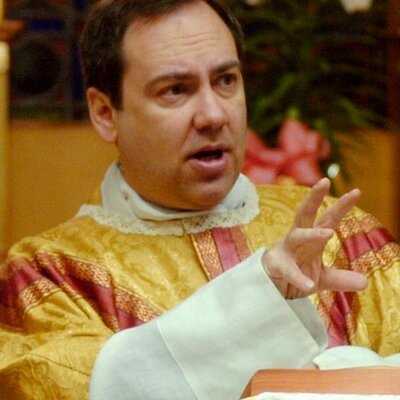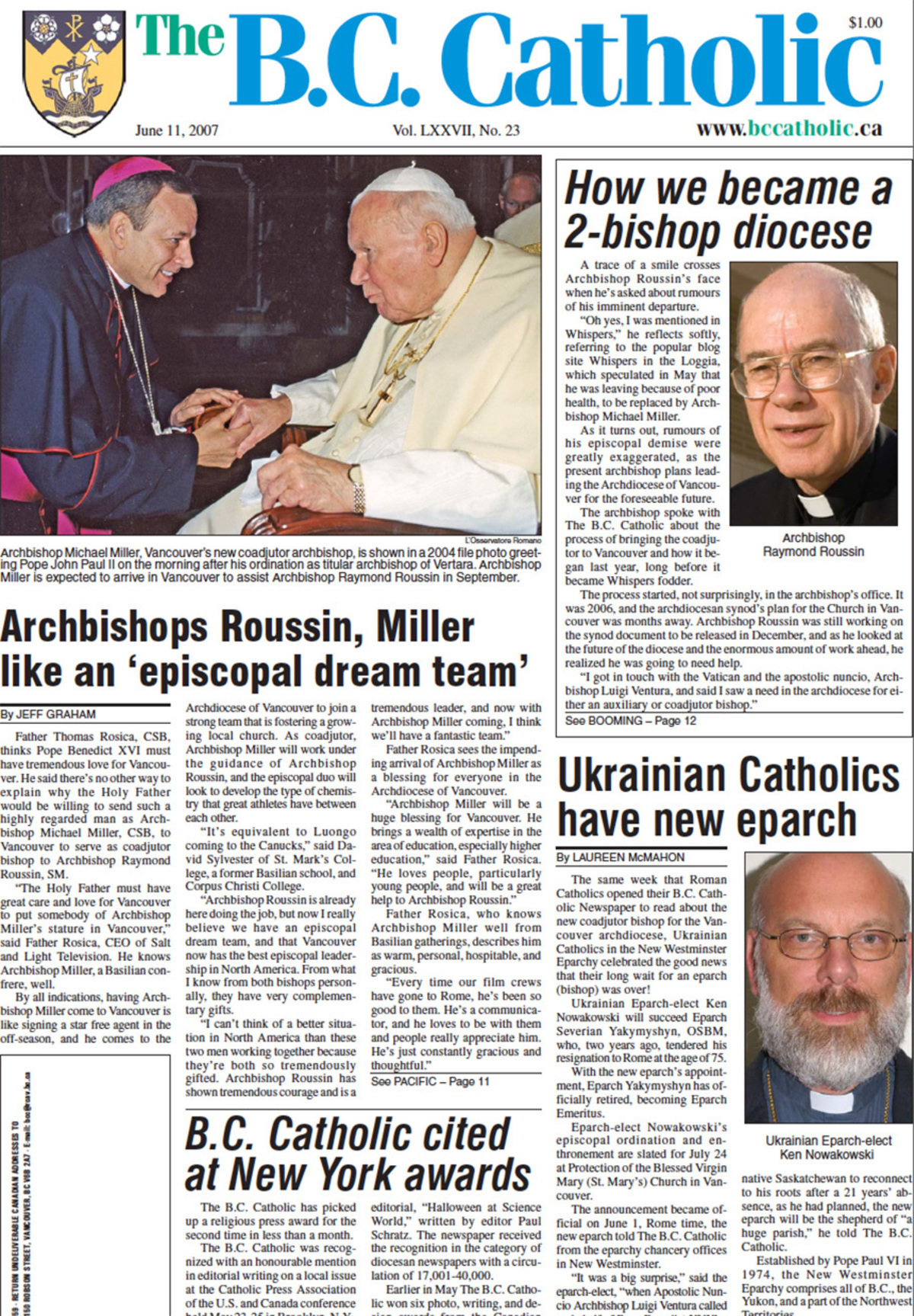15th Sunday of Ordinary Time, Year C
First Reading: Dt 30:10-14
Second Reading: Col 1:15-20
Gospel Reading: Lk 10:25-37
St. Paul asserts that everything depends on Christ: he is not just one option among many, but the only way, the only truth, and the only life.
Lionel : He does not say that Christ is the only way, the only truth and the only life and outside His Mystical Body the Catholic Church there is no known salvation.So all need to accept Christ in the Catholic Church and live the traditional teachings of the Church for salvation( to avoid Hell).
__________________________
In Christ, “all things in heaven and on earth
were created.... Christ is before all things, and in him all things hold
together.... For in Christ all the fullness of God was pleased to
dwell, and through him God was pleased to reconcile to himself all
things, whether on earth or in heaven.”
The Church said as much in its declaration Dominus Iesus, which sought to recall “certain indispensable elements of Christian doctrine” to all of us.
“It is necessary above all to reassert the
definitive and complete character of the revelation of Jesus Christ,”
the document said bluntly. There is no alternative way of salvation.
Jesus is the only mediator between God
and human beings. In him, “the incarnate Son of God,” we have the “full
revelation of divine truth”; from him, “the deepest truth about God and
the salvation of man shines forth.”
As people often note, the ethics of most
religions are very much the same: do not steal, do not commit adultery,
honour your father and your mother, etc. According to this Sunday’s
First Reading, this is no more than we should expect, for God’s
commandments are very near to all of us: in our mouths and in our hearts
for us to observe.
Dominus Iesus confirms that “the
Catholic Church rejects nothing of what is true and holy” in other
religions. “She has a high regard” for their “manner of life and
conduct,” their “precepts and teachings, which, although differing in
many ways from her own teaching, nonetheless often reflect a ray of that
truth which enlightens all men.”
Lionel: He quotes Vatican Council II Nostra Aetate without also citing Ad Gentes 7 which says all need faith and baptism for salvation. He also does not say that Nostra Aetate refers to unknown people in 2019. They can only be known to God if they are saved in this manner. They are always unknown for us humans. So they are not practical exceptions to Ad Gentes 7 and the dogma extra ecclesiam nulla salus.
___________________________________________
In fact, it says, “God, who desires to call all
peoples to himself in Christ and to communicate to them the fullness of
his revelation and love, does not fail to make himself present in many
ways, not only to individuals, but also to entire peoples through their
spiritual riches, of which their religions are the main and essential
expression even when they contain gaps, insufficiencies, and errors.”
Lionel : Yes theoretically this is possible and it would be known only to God. This is not a contradiction of the strict interpretation of Feeneyite EENS, the past exclusivist ecclesiology, the Syllabus of Errors, the Athanasius Creed, the Catechism of Pope Pius X etc which all affirmed the necessity of membership in the Catholic Church for salvation.
_____________________________________________
Nevertheless, the document asserts, “Jesus
Christ has a significance and a value for the human race and its
history” that are “unique and singular, proper to him alone, exclusive,
universal, and absolute.” As St. Paul says, there is no other name under
heaven by which we are saved.
Lionel : All Christians can say the same even though they are outside the Catholic Church and these non Catholic Christians are are oriented to Hell.
______________________________________________
Furthermore, the document says, Jesus
“constituted the Church” for the salvation of all; “he himself is in the
Church and the Church is in him.” In fact, other religions derive any
efficacy they have from the “fullness of grace and truth entrusted to
the Catholic Church.”
Lionel : Even if they derive salvation from the Church they would always be theoretical and hypothetical cases for us in the present time(2019). So this should not be projected as relevant,or an exception, to the 16th century interpretation of outside the Church there is no salvation.
____________________________________________
Had God not become man in the person of Jesus,
and had Jesus not founded a Church, the love of neighbour commanded in
this Sunday’s Gospel reading would have been useless.
Not only must we love God with all our heart,
soul, strength, and mind, but we must also love our neighbours as
ourselves, Jesus told the lawyer who questioned him. When the lawyer
rejoined, “And who is my neighbour?” Jesus answered clearly and
uncompromisingly. If, for Jews, their “neighbours” included even
Samaritans, with whom they would normally have no dealings, then our own
neighbours include even child abusers, terrorists, and people who have
betrayed or injured us.
In Bruce Marshall’s book The World, the Flesh, and Father Smith,
the priest tries to overcome spiritual pride by recalling what his
mother told him: “You can’t see into other people’s souls, but you can
see into your own, and so, as far as you really know, there is nobody
alive more wicked and ungrateful to almighty God than yourself.”
Lionel: Even though we cannot personally read another person's soul, the Church tells us in Vatican Council II and other magisterial documents that non Catholics are oriented to Hell without Catholic faith and the baptism of water in the Catholic Church. They need the Sacraments of the Church for salvation.They need to follow the traditional moral and faith teachings of the Catholic Church to avoid Hell.So when we meet a non Catholic we know that he or she is oriented to Hell even though we cannot read their soul.
_______________________________________________
Christ loves everybody, even you and me. As long as we have done good to the least of his brethren, we have done it to him.
Lionel: However according to Vatican Council II (AG 7, LG 14) most people are oriented to Hell and are they are there today since they have died without faith and baptism.The norm for salvation is faith and baptism and not invincible ignorance or last- minute repentance, which could only be known to God. So there are no known exceptions to Feeneyite EENS.
Dominus Iesus was put together by Cardinal Joseph Ratzinger, Prefect, Congregation for the Doctrine of Faith.
Cardinal Raztinger was a Cushingite. For him unknown cases of the baptism of desire etc were known exceptions to EENS. This is irrational but it was expedient for the Left.
For a Feeneyite unknown cases of the baptism of desire, baptism of blood and being saved in invincible ignorance are hypothetical and theoretical and so are not objective examples of salvation outside the Church. They are not exceptions to Feeneyite EENS.
Similarly it is with Cushingism that Cardinal Raztinger interpreted Vatican Council II and wrote Dominus Iesus.There are fundamental philosophical and theological flaws in this document. It has to be read with Feeneyite theology and philosophy for a continuation, and not rupture with Tradition(EENS, Syllabus of Errors etc).
-Lionel Andrades
1
-
-
Red being an exception to the blue -Vatican Documents
(1)
-
Red Column
(4)
-

-
Red is an exception to the blue-Bologna School/ Fr.John Zuhlsdorf
(1)
-
Red is not an exception to the blue - Proclamation
(2)
-
Red is not an exception to the blue - profances Holy Mass
(1)
-
Red is not an exception to the blue :CCC 846-848
(4)
-
Red not an exception to blue mapping
(1)
________________________________
DOMINUS IESUS
IV. UNICITY AND UNITY OF THE CHURCH
16. The Lord Jesus, the only Saviour, did not only establish a simple community of disciples, but constituted the Church as a salvific mystery: he himself is in the Church and the Church is in him (cf. Jn 15:1ff.; Gal 3:28; Eph 4:15-16; Acts9:5). Therefore,
the fullness of Christ's salvific mystery belongs also to the Church,
inseparably united to her Lord. Indeed, Jesus Christ continues his
presence and his work of salvation in the Church and by means of the
Church (cf.Col 1:24-27),47 which is his body (cf. 1 Cor 12:12-13, 27; Col 1:18).48 And
thus, just as the head and members of a living body, though not
identical, are inseparable, so too Christ and the Church can neither be
confused nor separated, and constitute a single “whole Christ”.49 This same inseparability is also expressed in the New Testament by the analogy of the Church as the Bride of Christ (cf. 2 Cor 11:2; Eph 5:25-29; Rev 21:2,9).50
Therefore,
in connection with the unicity and universality of the salvific
mediation of Jesus Christ, the unicity of the Church founded by him must
befirmly believed as a truth of Catholic faith. Just as there is
one Christ, so there exists a single body of Christ, a single Bride of
Christ: “a single Catholic and apostolic Church”.51 Furthermore, the promises of the Lord that he would not abandon his Church (cf. Mt 16:18; 28:20) and that he would guide her by his Spirit (cf. Jn 16:13)
mean, according to Catholic faith, that the unicity and the unity of
the Church — like everything that belongs to the Church's integrity —
will never be lacking.52
The Catholic faithful are required to profess that there is an historical continuity — rooted in the apostolic succession53 —
between the Church founded by Christ and the Catholic Church: “This is
the single Church of Christ... which our Saviour, after his
resurrection, entrusted to Peter's pastoral care (cf. Jn 21:17), commissioning him and the other Apostles to extend and rule her (cf. Mt28:18ff.), erected for all ages as ‘the pillar and mainstay of the truth' (1 Tim 3:15). This Church, constituted and organized as a society in the present world, subsists in [subsistit in] the Catholic Church, governed by the Successor of Peter and by the Bishops in communion with him”.54 With the expression subsistit in, the Second Vatican Council sought to harmonize two doctrinal statements: on
the one hand, that the Church of Christ, despite the divisions which
exist among Christians, continues to exist fully only in the Catholic
Church, and on the other hand, that “outside of her structure, many elements can be found of sanctification and truth”,55 that is, in those Churches and ecclesial communities which are not yet in full communion with the Catholic Church.56 But
with respect to these, it needs to be stated that “they derive their
efficacy from the very fullness of grace and truth entrusted to the
Catholic Church”
-Dominus Iesus 16.
________________________________
July 4, 2019
https://bccatholic.ca/voices/fr-vincent-hawkswell/religions-may-be-similar-but-catholicism-is-unique





_460_300_75_s_c1.jpg)














